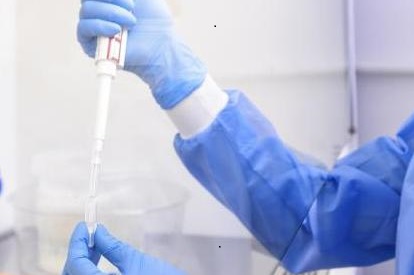Inoculum size is defined as the number of invading pathogenic microorganisms that is sufficient enough to initiate an infectious process (i.e. an infection) in a susceptible human host. Pathogens must reach or exceed a particular threshold before they will be able to produce clinical signs which are unique to a given disease process.
Normally, the penetration of the delicate skin of a human being by a small number of pathogenic microorganism is less often than not capable of causing an infection or a disease in the host (though some exceptions can exist such as in HIV infection where a minute microbe is required to establish a disease).
It is noteworthy that the human body is prepared with immune system (innate or artificial) that normally wards-off microbes upon gaining entry into the body (especially if the number of penetrating organisms is too small to overpower the host’s immunity). Pathogenic microorganisms enter the body of a human host via many routes including the nose (inhalation), skin penetration (wound, abrasion and cuts), ingestion (through food and water), surgical means, insect bites (e.g. Plasmodium parasites), through blood transfusions and possibly through the transplant of organs.
The inoculum size of an organism amongst others is a determining factor whether an infection will occur or not after prior entry of a pathogen into a human host. Antiseptics are normally applied on wounds or on the skin prior to surgery or injection in order to effectively reduce the number of microorganisms on the site of penetration so that unwarranted or infectious amount of pathogens do not gain entry and initiate an infection in the host.
Virtually every anatomical site of the human body are preferred location for the entry of pathogens into the body of a human host, but some microbes enter their host only through a particular site and the inoculum size of the invading organism is very critical to the initiation of an infection or a disease process.
The continuous exposure of a human host to pathogenic microorganisms can increase its inoculum size over time, thus giving the invading microbe the chance to establish an infection which can progress into a disease if not therapeutically and diagnostically managed.
References
Brooks G.F., Butel J.S and Morse S.A (2004). Medical Microbiology, 23rd edition. McGraw Hill Publishers. USA. Pp. 248-260.
Madigan M.T., Martinko J.M., Dunlap P.V and Clark D.P (2009). Brock Biology of microorganisms. 12th edition. Pearson Benjamin Cummings Publishers. USA. Pp.795-796.
Prescott L.M., Harley J.P and Klein D.A (2005). Microbiology. 6th ed. McGraw Hill Publishers, USA. Pp. 296-299.
Ryan K, Ray C.G, Ahmed N, Drew W.L and Plorde J (2010). Sherris Medical Microbiology. Fifth edition. McGraw-Hill Publishers, USA.
Singleton P and Sainsbury D (1995). Dictionary of microbiology and molecular biology, 3rd ed. New York: John Wiley and Sons.
Talaro, Kathleen P (2005). Foundations in Microbiology. 5th edition. McGraw-Hill Companies Inc., New York, USA.
Discover more from #1 Microbiology Resource Hub
Subscribe to get the latest posts to your email.



